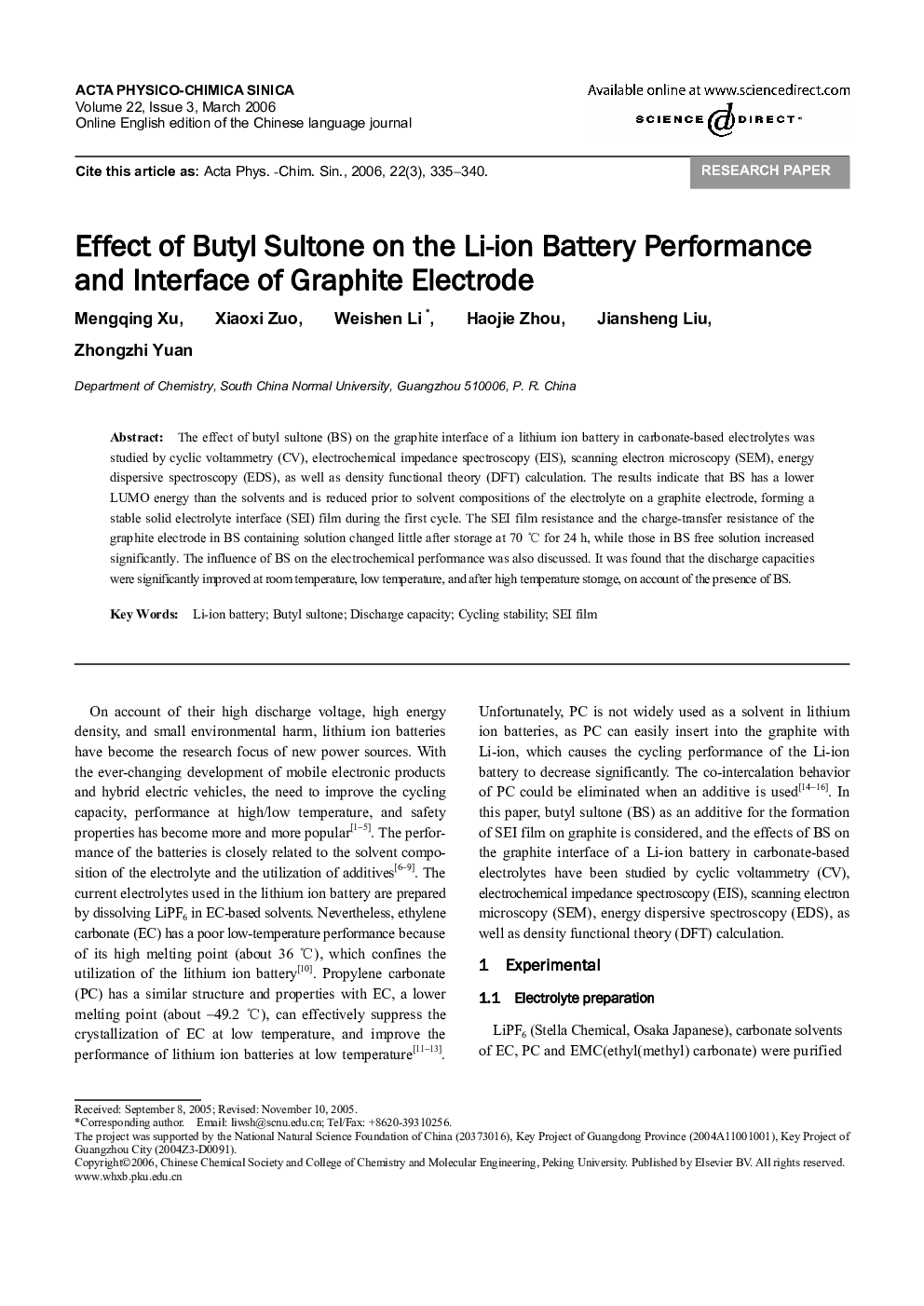| Article ID | Journal | Published Year | Pages | File Type |
|---|---|---|---|---|
| 7832709 | Acta Physico-Chimica Sinica | 2006 | 6 Pages |
Abstract
The effect of butyl sultone (BS) on the graphite interface of a lithium ion battery in carbonate-based electrolytes was studied by cyclic voltammetry (CV), electrochemical impedance spectroscopy (EIS), scanning electron microscopy (SEM), energy dispersive spectroscopy (EDS), as well as density functional theory (DFT) calculation. The results indicate that BS has a lower LUMO energy than the solvents and is reduced prior to solvent compositions of the electrolyte on a graphite electrode, forming a stable solid electrolyte interface (SEI) film during the first cycle. The SEI film resistance and the charge-transfer resistance of the graphite electrode in BS containing solution changed little after storage at 70 °C for 24 h, while those in BS free solution increased significantly. The influence of BS on the electrochemical performance was also discussed. It was found that the discharge capacities were significantly improved at room temperature, low temperature, and after high temperature storage, on account of the presence of BS.
Related Topics
Physical Sciences and Engineering
Chemistry
Physical and Theoretical Chemistry
Authors
Mengqing Xu, Xiaoxi Zuo, Weishen Li, Haojie Zhou, Jiansheng Liu, Zhongzhi Yuan,
